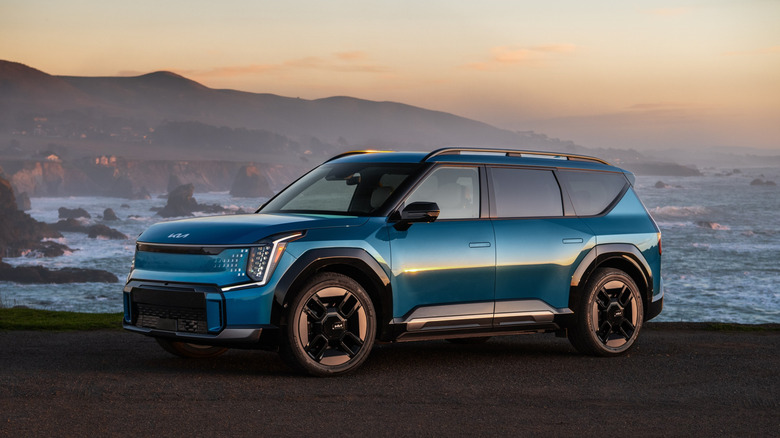
The first column shifter in America was introduced in 1938, with the goal of freeing up space in the center console for a larger front bench seat. During that time, manual transmissions usually had three speeds, so a column shifter made a lot of sense. However, as automakers added more gears, cars slowly transitioned to floor-mounted shifters. Still, many vehicles during the 1960s and 1970s were offered with automatic transmission column shifters, including muscle cars.
By the 1990s, column shifters
were mostly found in larger sedans and pickup trucks, but today they are making a return thanks to EVs. These modern reincarnations utilize shift-by-wire, meaning they don't require a direct connection to the transmission. Thus, they can also be used in hybrids or any modern vehicle. In this piece, we'll introduce you to some modern cars that are bringing back column shifters, ensuring all powertrain options are included. Let's dig in!
2026 Kia EV9
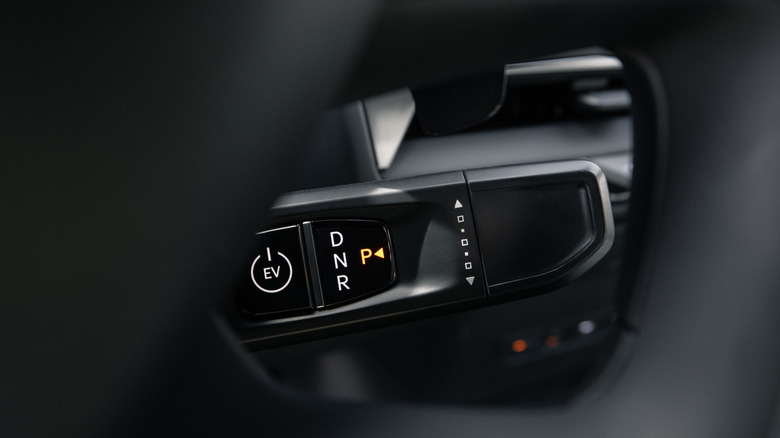
Americans love three-row SUVs but still aren't crazy about EVs, with sales dropping this year. Can a three-row, all-electric SUV change that? If any model has a chance, it's the new standard for electric three-row SUVs — the Kia EV9. With its stylish exterior, tech-laden, spacious interior, and good range figures, the EV9 might just convince American buyers.
The EV9 is also relatively affordable, at least for a large electric SUV. The base $56,395 (destination fee: $1,495) model gets you a relatively small 76.1-kWh battery, which is good enough for a 230-mile range. Its 215 hp rear electric motor is also far from exciting. Still, stepping up to the Light Long Range RWD ($59,395) gives you a larger 99.8-kWh battery pack, which can travel 304 miles between charges. Two dual-motor AWD models are also available, packing 379 hp and 501 hp in the GT variant. The latter accelerates to 60 mph in just 4.3 seconds, which is bonkers for a three-row family SUV.
Still, the EV9's interior is even more impressive. Space in the first two rows is excellent, and you can fit kids comfortably in the third row. With all three rows in place, the EV9 also has a usable 20-cubic-feet cargo volume and an additional frunk. The dashboard features two 12.3-inch screens, a 5-inch screen, and physical climate controls. The column-mounted shifter frees up space for the incredibly functional center console with two levels of storage bins.
2026 Hyundai Ioniq 9
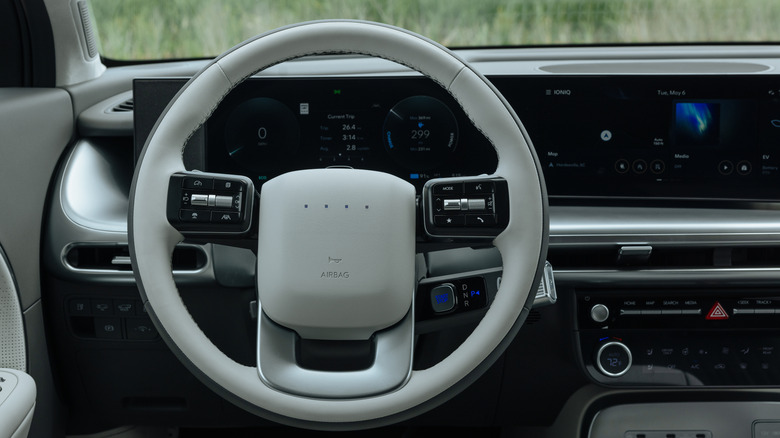
Hyundai's brand-new electric eight-seater shares internals with the EV9, but features a different exterior design. Where the EV9 is sportier, the Ioniq 9 looks chunky and futuristic. The pixel-like LED headlights draw immediate attention, making the Ioniq 9 look like it came from the next decade.
It has the same footprint as its Kia sibling, so one might expect a similar interior experience. Yet, the Hyundai Ioniq 9 has some unique features that other SUVs need to steal. The cabin features numerous storage solutions and 100W USB-C ports that can charge laptops. Physical controls to accompany the curved dashboard screen. This includes buttons on the steering wheel and a column-mounted shifter that opens up space on the center console.
Hyundai offers several powertrain options on the Ioniq 9. The entry-level model gets a rear-mounted 215-hp motor, while the dual-motor AWD variant bumps the output to 303 hp. The Performance AWD model produces 422 hp. There is no 501-horsepower variant like in the EV9, but Hyundai's three-row EV also has a larger battery. As standard, the Ioniq 9 is equipped with a 110.3-kWh unit, which provides 320 to 335 miles of range in the RWD model and 311 miles in the AWD model. Moreover, the Ioniq 9 supports 350-kW DC charging, meaning a 10 to 80% charge takes just 24 minutes.
2025 Mercedes-Benz EQE
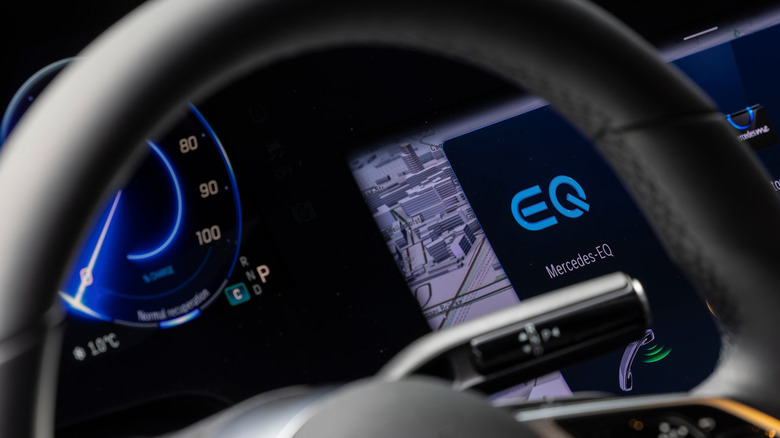
Korean automakers aren't the only ones bringing back column shifters. Mercedes-Benz's EVs are also equipped with an e-shifter positioned on the steering column. It's a fairly straightforward shifter to use: Pull down the lever for drive or push it up for reverse. To engage park, just press the button on the side.
The Mercedes-Benz EQE electric sedan is also equipped with this shifter. This approach has cleaned up the center area significantly and opened up additional storage space under the floating console. Unfortunately, the area is completely covered with glass, which, along with the center touchscreen, offers tons of opportunities for smudging. Speaking of fingerprints, you can use yours to access individual profiles in the infotainment. Other than that, the Mercedes-Benz EQE feels familiar for a car with the three-pointed star badge. It's very smooth and refined, offering vast space in both rows. Although it looks overwhelming at first, the tech is also easy to use.
Initially, the EQE had a middling range, though Mercedes-Benz fortunately bumped the battery capacity from 90.6 kWh to 96.0 kWh for the 2025 model year (MY). The regenerative braking feature was also reworked to extract as many miles as possible from the battery. As a result, the base EQE 350+, which has a single 288 hp rear motor, features a solid 308-mile range. The EQE supports 170-kWh DC charging, which tops up the battery from 10 to 80% in 32 minutes.
2025 Hyundai Ioniq 5
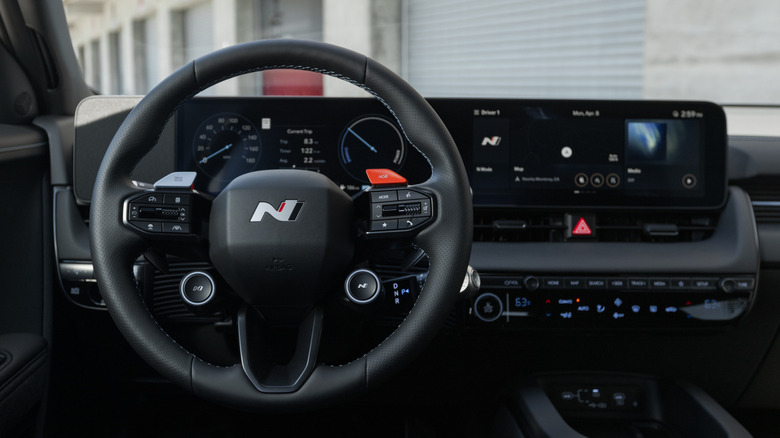
The Ioniq 9 is a great addition to Hyundai's EV range, but the Ioniq 5 is the brand's bread-and-butter model. With a base price of $44,200(destination fee: $1,475), it's relatively affordable, yet still offers a solid 245-mile range from a 63.0-kWh battery. For $7,000 extra, you get the larger 84.0-kWh battery, which provides a 318-mile range and more generous equipment. The Ioniq 5 also supports 350-kW DC fast charging, which tops up the battery from 10 to 80% in just 18 minutes.
The Hyundai Ioniq 5 also looks cool on the outside, with performance to match. The base 168-hp motor is underpowered, but the 225-hp motor that comes with the larger battery is zippy. There is also a 320 hp AWD model, which feels seriously potent. Hyundai's N division also cooked a performance variant, aimed at enthusiasts. With 641 hp, excellent driving dynamics, and fun gimmicks, like paddles with faux gear shifts, the Ioniq 5 N is a true track star.
Regardless of the model, you get the column-type shifter from the Ioniq 9. As a result, the center console is practical, with enough space for larger objects. The cabin is roomy enough for bigger adults, too, and the cargo volume is acceptable. Finally, the dual 12.0-inch infotainment is very functional, but Hyundai still employed physical buttons for the climate.
2025 Volkswagen ID.4
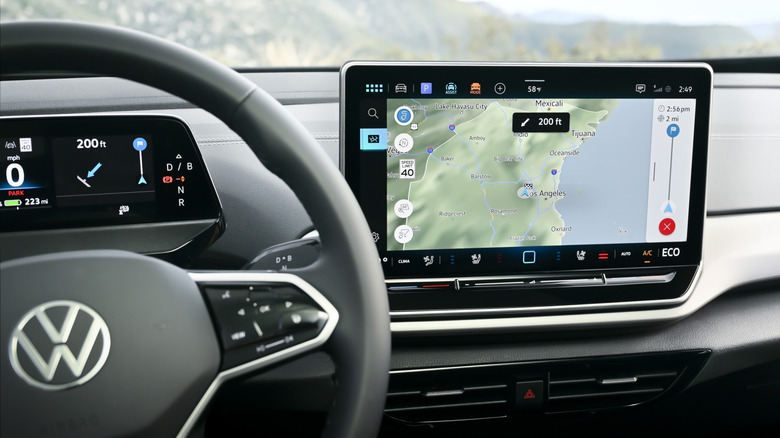
Volkswagen was one of the first legacy automakers to try to disrupt Tesla's dominance in the EV sector with its ID range. In Europe, at least, the German automaker had success with the ID.4, a compact crossover that competes directly with the Model Y and Ioniq 5.
Like its Korean rival, the ID.4 also has a column shifter, though it doesn't operate in a similar fashion. Since forever, pulling the stalk down engaged the drive, but in the ID.4, you push it away from you. And the interior foibles of the electric SUV for the masses don't end there. The infotainment software is complicated, especially because the ID.4's dashboard doesn't have many physical controls. Instead of pressing a button, you need to tap the screen a few times. The dashboard has fiddly capacitive controls, which VW says are going away for good next year.
As far as range goes, the base ID.4 is subpar for the category. Yes, at $41,420 (destination fee: $1,425), it is competitive, but its small 58.0-kWh battery provides a short 206-mile range. Luckily, there is a 77.0-kWh option, which bumps up the range to 291 miles on the 201 hp RWD model. The dual-motor AWD version produces 330 hp. The maximum charging speed is 175 kW, or half of what the Ioniq 5 is capable of.
2025 Chevrolet Blazer EV
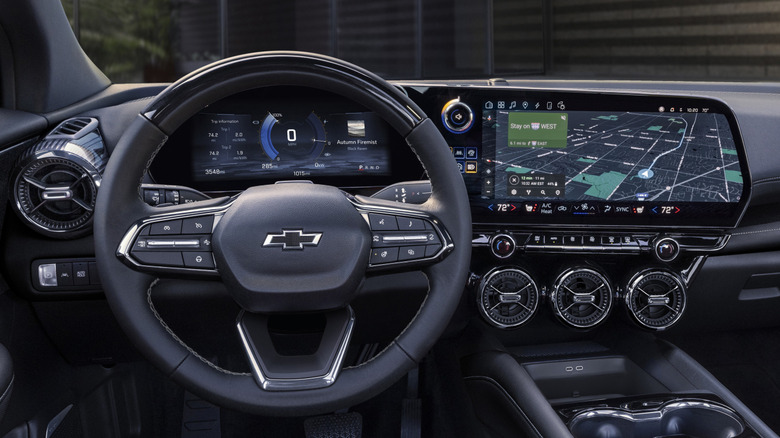
Chevy played it safe with its latest mass-market EV. Instead of breaking new ground, like it did with the Bolt, the Blazer EV builds upon a popular nameplate. However, don't mistake it for the regular Blazer, as they are siblings only in name. The gas model utilizes GM's C1 platform, while the EV sits on the electric-only Ultium platform. The Blazer EV also looks way more aggressive and sporty, with a stretched wheelbase and short overhangs.
Even so, the Blazer EV RS drives like a normal EV. Yes, the RS bits add drama to the exterior, but with only 300 hp on tap, the rear-wheel-drive powertrain isn't soul-stirring. For those who want real thump in the back, there is the high-performance SS model, which has 615 hp. That said, if you need to travel long distances, the rear-wheel-drive RS model boasts the longest range of 334 miles.
Another positive attribute is the Blazer EV's spacious and accommodating cabin. It rides well, and GM's infotainment tech features a 17.7-inch touchscreen and Google Built-In operating system. The same is true for the well-placed column shifter, which works as you would expect in Chevy's combustion vehicles. Unfortunately, Android Auto and Apple CarPlay are not available on the Blazer EV.
2025 Chevrolet Tahoe/Suburban
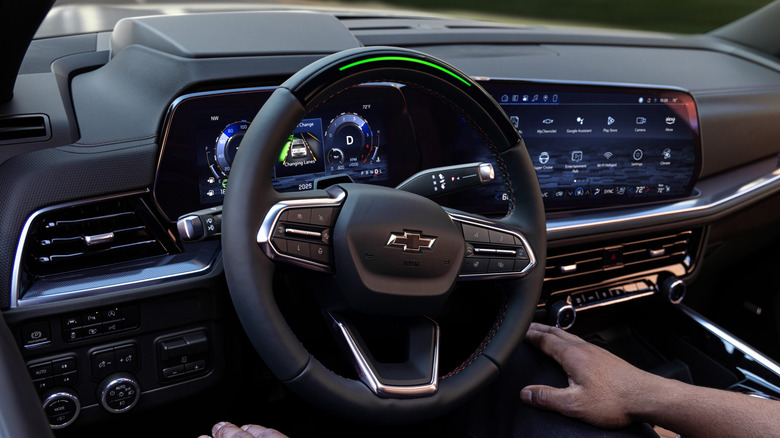
You can get the Blazer EV column-mounted shifter on Chevy's big three-row SUVs, the 2025 Tahoe & Suburban. That is despite the fact that neither model is available with an electric or hybrid powertrain. Instead, you have the option of two V8 engines and one inline-six diesel.
Of course, the most interesting powertrain is the 420 hp, 6.2-liter V8, which provides good acceleration. Still, if you want higher fuel efficiency, the 305 hp turbodiesel is rated at 24-mpg combined in the Tahoe. With 495 lb-ft of torque, the self-combusting engine also pulls quite well for its size. All three engines are paired with a 10-speed automatic engaged via the neat column shifter.
Step inside both SUVs, and you'll be greeted by Chevy's brand-new, tech-laden dashboard. A 17.7-inch center screen pairs with an 11-inch digital instrument cluster, but Chevy has kept the frequently used functions accessible via physical buttons. As expected from their mammoth footprint, the Tahoe and Suburban offer excellent interior space, with three adult-sized rows and ample cargo volume. The move to a column-mounted shifter didn't result in a front row bench, but at least it made the center console more practical.
2026 Mercedes-Benz GLE Hybrid
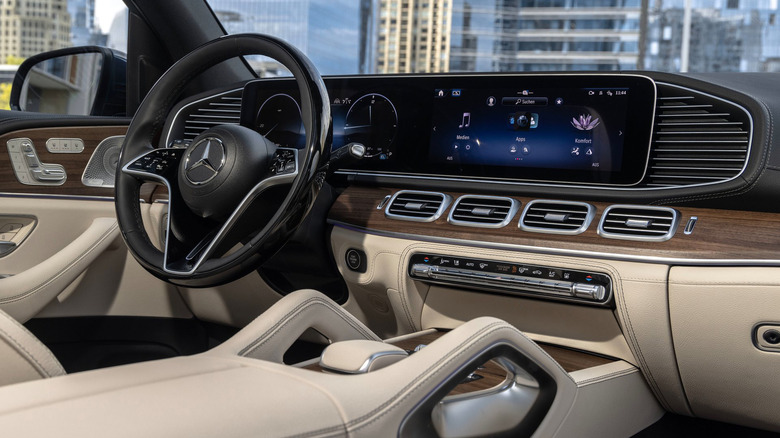
Mercedes-Benz slowly started implementing its column gear stalk in its non-EV vehicles, such as the 2026 GLE 450e 4Matic hybrid. Yes, thanks to the relatively large 23.3-kWh battery, this plug-in hybrid SUV can travel an EPA-estimated 50 miles. Still, the hybrid powertrain is accompanied by a nine-speed transmission, the same as Merc's gas-only models. With 381 hp on tap, the 2.0-liter turbo-four hybrid is relatively quick, too.
The GLE is super comfy inside, with ample room for adults in both rows. The cabin is also exceptionally nice, featuring high-quality materials and an excellent finish. Add to that exceptional sound insulation, and the result is an outstanding long-distance cruiser aside from the air suspension, which is comfortable but not as smooth as you'd expect. But really, we are nitpicking here.
Don't let those imposing screens scare you. The Mercedes-Benz MBUX infotainment is straightforward, and the GLE still gets physical controls for the climate. You don't even need to touch the screen, as there is also a touchpad on the center console. Kudos to Mercedes-Benz for avoiding piano plastic — the areas you feel are finished in wood or leather.
2025 GMC Terrain
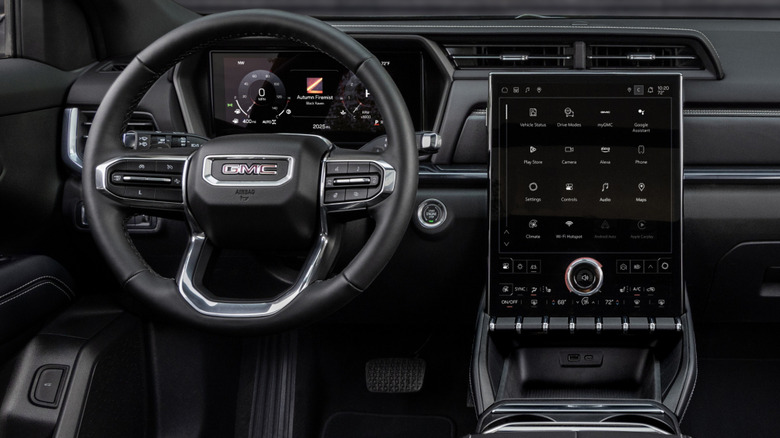
The latest 2025 GMC Terrain is currently only available with the Elevation trim. For most buyers, that won't be an issue. It's not a Denali, but it still enjoys good fit and finish inside. If you find leather and soft plastics important, you'll need to wait for the 2026 MY, when the Denali trim becomes available. Additionally, the standard equipment isn't entirely sufficient. For instance, you'll need to pay extra for a dual-zone climate control system.
At least the Terrain Elevation with FWD starts at a reasonable $31,395 (destination fee: $1,395), with the AWD model costing $2,000 more. Both models are equipped with a 1.5-liter turbocharged four-cylinder engine, producing 175 hp. Still, the FWD model comes exclusively with a CVT, while the AWD is equipped with an eight-speed auto.
Crucially, at least for tech-savvy buyers, the base GMC Terrain comes with a central, portrait-oriented 15-inch touchscreen accompanied by an 11-inch digital gauge display. The infotainment has built-in Google apps, and unlike GM's EVs, still supports Apple CarPlay and Android Auto. Another great addition is the climate control switches and large volume control knob.
Unfortunately, controlling the headlights requires tapping on the screen, though GMC at least replaced the push-button shifter with a column-mounted one. With this move, the automaker was still able to free up space in the floating center console, while providing its customers with a familiar shifting experience.
2025 Chevrolet Equinox
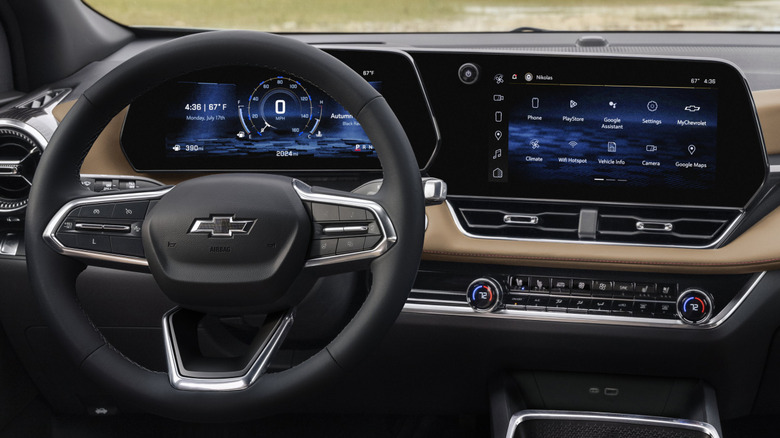
The 2025 Chevy Equinox is largely the same vehicle as the 2025 GMC Terrain. It has the same 1.5-liter turbocharged engine, transmission options, and exterior dimensions. Chevy also went with a column-mounted shifter, making the center console way more practical.
Since it carries the Chevy badge, the Equinox is slightly more approachable, starting at $29,995 (destination fee: $1,395)for the well-equipped LT trim. You'll lose some screen real estate in the Equinox. A landscape-oriented center touchscreen measures 11.3 inches, and the digital instrument cluster 11 inches. The Chevy also retains physical buttons, which make things much more comfortable for the driver. You don't even need to touch the screen at all, as Chevy incorporated a rotary knob controller where a floor-mounted transmission lever would typically be located.
Overall, the 2025 Chevrolet Equinox is boring, but in the best possible way. Driving this compact SUV isn't fun, but nobody expects it to be. Crucially, it's easy to drive, relatively comfortable, and spacious inside.
2025 Ford Mustang Mach-E
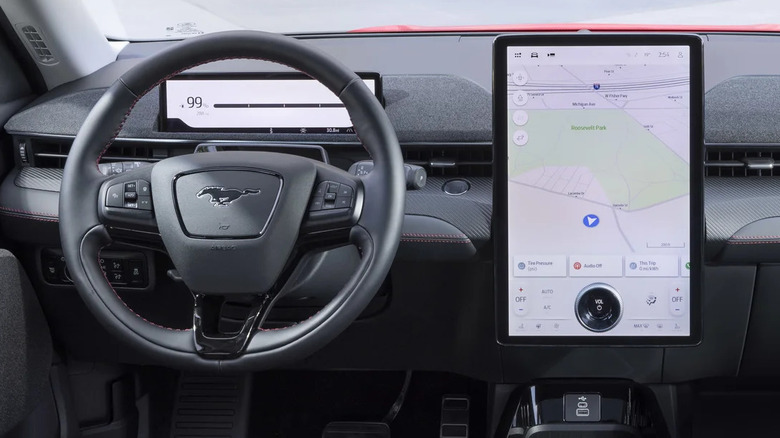
Even half a decade after the introduction of Ford's revolutionary EV, the Mustang Mach-E remains a popular car among buyers. The onslaught of competitors, like the Ioniq 5, Kia EV6, and Toyota BZ4X, wasn't enough to give Ford's EV headaches.
That's because the Ford Mustang Mach-E is a great car, with an incredibly quiet cabin and neck-snapping performance. Not that you expected anything less from an EV with the Mustang badge, but the GT Performance model produces a seriously potent 480 hp and 700 lb-ft of torque.
More importantly, Ford lowered the price of the Mach-E for the 2025 MY, and it now starts at a competitive $38,490 (destination fee: $1,995). Although cheaper than its rivals, the base model still comes with a solid 70.0-kWh battery. Still, you'll need to go for the larger 91.0-kWh unit to get the max 320-mile range. All models also now feature heat pumps, meaning using the A/C won't accelerate battery drain as much.
Inside, the Mustang Mach-E still features the huge, 15.5-inch portrait-oriented touchscreen. Unfortunately, Ford hid most of the controls behind the screen, though the column-mounted gear stalk at least provides some familiarity. The cabin is very comfortable, though, with lots of space for adult passengers and cargo, despite the coupe-like appearance.
2025 Kia EV5
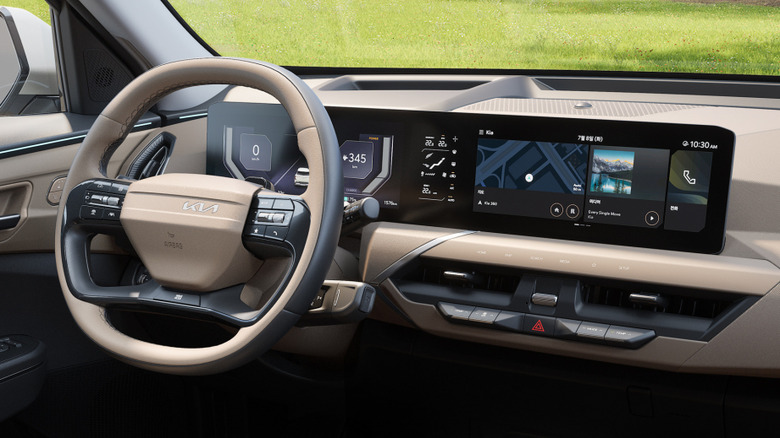
The Kia EV5 looks like a smaller EV9, and it looks very promising on paper. Yes, the base model doesn't utilize Hyundai's and Kia's 800V, E-GMP platform, meaning it only supports DC charging speeds of up to 140 kW. Even so, choosing the GT-Line brings the 800V architecture into the mix with 350-kW charging. It's more powerful, too, producing 308 hp with AWD, with the base model being good for only 215 hp and RWD.
Still, it's the EV5's interior that steals the show. Although it sits below the EV6 in Kia's EV range, this boxy crossover has a cavernous cabin, with ample space in both rows. Kia even offers a six-seater configuration with a front bench, made possible by the column-mounted shifter. The cabin looks premium, too, with a good choice of colors and materials. Heck, high-end models are even equipped with massaging seats and cooled/heated rear storage. Two large 12.3-inch screens give the EV5 a sci-fi vibe. However, the climate controls are inside a small 5-inch screen located between two bigger displays.
2025 Hyundai Kona
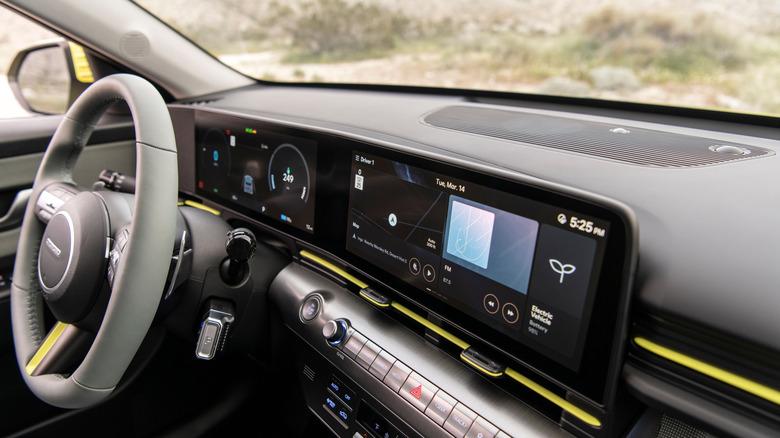
The 2025 Kona has Hyundai's EV interior tech, but at a much more approachable price of $26,045 (destination fee: $1,395). Higher trims include dual 12.3-inch screens, which give off Ioniq 5 vibes, but Hyundai was smart to retain physical controls for the climate. Another great addition is the column-mounted shifter, the same one found in the brand's EVs, including this crossover's sibling, the Kona Electric.
The cabin is reasonably spacious in both rows, and the 26-cubic-foot cargo volume is also excellent for the category. It feels nice, too, thanks to the ambient mood lighting with 64 different colors and first-row relaxation seats optimized for 'weightless' body pressure distribution.
The base Kona comes with a lethargic 2.0-liter four-cylinder engine producing 147 hp, funneled through a continuously variable transmission. A more powerful option is the 1.6-liter turbocharged engine, making 190 hp, and equipped with an eight-speed automatic with paddle shifters. The more powerful engine becomes available in the N Line S trim, which starts at $31,045. It's slightly thirstier, too, rated at 28 mpg for the FWD model, compared to 31 mpg for the 2.0-liter.
Meanwhile, the Kona Electric is available with 133 and 201 horsepower FWD powertrains, as well as two battery options: 48.6 kWh and 64.8 kWh. Still, at $34,470 for the underpowered base model with the smaller battery, the Kona Electric is a much tougher sell than the gas-powered models.
Want the latest in tech and auto trends? Subscribe to our free newsletter for the latest headlines, expert guides, and how-to tips, one email at a time.
Read the original article on SlashGear.












